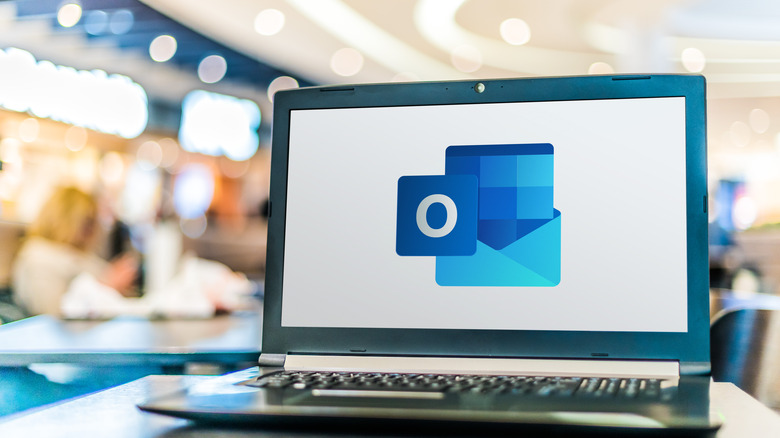How To Add A Shared Mailbox In Outlook
In an era where everyone has their own individual email address, the idea of a shared inbox must sound a bit quaint. Some of us haven't shared a mailbox with anyone since we were kids, living with our families. However, there are certain circumstances where a shared email mailbox could prove beneficial, such as when you need to ensure that multiple people are privy to certain emails, or if you want a convenient means of coordination.
For instance, if you're a small business owner and need to stay on top of any important emails received by you or your employees, a shared mailbox would allow you to do that. Or, if you want a convenient way to coordinate with employees or coworkers, a shared mailbox can serve as your personal calendar. Either way, if you're on the hunt for such a feature, you can make one happen easily by using Outlook.
Creating a shared mailbox
Shared Microsoft Outlook mailboxes are handy for when you want or need multiple people to be able to see or respond to emails. You know those info emails that many businesses have? Most of those are shared mailboxes so it's not always one person responding to every business inquiry. You can manually add a shared mailbox to an Outlook account with just a few steps.
-
Open the Outlook app.
-
Click the File tab in the top-left.
-
Select Account Settings.
-
Select the Email tab.
-
Choose the account you want to make a shared mailbox.
-
Click Change.
-
Select More Settings.
-
Select Advanced.
-
Click Add.
-
Enter an address for your shared mailbox.
-
Click OK.
-
Click Next, then finish.
Remember, a shared mailbox is for multiple users, so don't use your regular email address for it. Once the mailbox is set up, you or an admin can add more users to it.
-
Right-click the inbox.
-
Select Properties.
-
Switch to the Permissions tab.
-
Click Add.
-
Enter the name of the user you want to add.
-
Set this user's permission level.
-
Click OK.
The various permission levels determine the extent to which a user can edit and respond to emails in the mailbox, so remember to dole out permissions as necessary.
Sending and receiving emails in your shared mailbox
Once you've got your shared mailbox set up, sending and receiving emails with it is largely the same as it is with a regular Outlook inbox.
-
In Outlook, click New Email.
-
In the From field of the email, type in your shared mailbox's address.
-
Click OK.
-
Compose your message.
-
Click OK when you are finished.
When you send an email utilizing the shared mailbox, the recipient will only see the shared mailbox's address. This is a good way to keep internal or private email addresses hidden. When you receive an email to your shared mailbox, your shared mailbox's address will appear in the From field to indicate which inbox it's intended for.
Incidentally, your Outlook app may not have a From field in email composition available by default. In this case, just click the Options button, then the From option. When enabled, this option will ensure that your emails have a From field to fill out. After you send an email using the shared mailbox once, it'll automatically appear in a drop-down in the From field, so you can access it again quickly.
Using your shared mailbox as a calendar
Aside from sending and receiving emails, a shared Outlook mailbox also doubles as a group or company calendar. When you set up special dates or appointments in your Outlook calendar through the shared mailbox, all members of the mailbox will be able to see and track those appointments.
To use the shared calendar, just open the Outlook app, switch to the Calendar tab, and select your shared mailbox's address. At this point, you can utilize the calendar the same way you would with your normal Outlook account, setting up appointments on particular dates. The difference is that, when an appointment is made on the shared calendar, every member will automatically have their respective calendars updated with the event you made. Additionally, anyone with sufficient privileges will be able to edit any existing appointments on the calendar. Just make sure that you only give those permissions to those you trust to handle your calendar.



